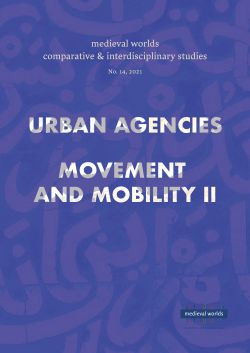Alaric Hall
S. 289 - 296
doi:
10.1553/medievalworlds_no14_2021s289
Verlag der Österreichischen Akademie der Wissenschaften
doi:
10.1553/medievalworlds_no14_2021s289
Abstract:
It has been thought that of the forty or so surviving Old Norse riddles, only two have close parallels in the wider international riddle tradition. This note shows, however, that the riddle on the leek in the probably thirteenth-century Heiðreks saga has a close parallel in one of the late antique or early medieval Bern Riddles, on garlic. Moreover, the larger conceptual structure of the leek riddle, which positions the leek as an inverted person situated between the earth and the sun, is paralleled by one of the riddles of the tenth-century Hebrew poet Dunash ben Labraṭ ha-Levi, which figures the sun and its light as a tree with its roots in the sky and its branches in the ground. The riddles of Heiðreks saga are more integrated into wider riddle culture than has been realised, and comparison of Dunash’s work with the Old Norse and Latin material helps to settle debate about the solution to Dunash’s riddle.
riddles, Heiðreks saga, Bern Riddles, Dunash ben Labraṭ ha-Levi, allium
Published Online:
2021/12/01 11:11:15
Object Identifier:
0xc1aa5576 0x003d081a
Rights:All rights reserved.For questions regarding copyright and copies please contact us by email.
medieval worlds provides a forum for comparative, interdisciplinary and transcultural studies of the Middle Ages. Its aim is to overcome disciplinary boundaries, regional limits and national research traditions in Medieval Studies, to open up new spaces for discussion, and to help developing global perspectives. We focus on the period from c. 400 to 1500 CE but do not stick to rigid periodization.
medieval worlds is open to submissions of broadly comparative studies and matters of global interest, whether in single articles, companion papers, smaller clusters, or special issues on a subject of global/comparative history. We particularly invite studies of wide-ranging connectivity or comparison between different world regions.
Apart from research articles, medieval worlds publishes ongoing debates and project and conference reports on comparative medieval research.
Urban Agencies: Reframing Anatolian and Caucasian Cities (13th-14th Centuries)
Guest Editors: Bruno de Nicola and Matthew Kinloch
Preface
Matthew Kinloch and Bruno de Nicola
Reframing Medieval Anatolia, Caucasia, and the Aegean: Narratives, States, and Cities
Matthew Kinloch
Urban Agency and the City Notables of Medieval Anatolia
A. C. S. Peacock
Cities and Imperial Authority in the Western Provinces of the Byzantine Empire, 12th-14th Centuries
Teresa Shawcross
A Conceptual Account of Market Morals that Resonated in Medieval Anatolia under Christian and Muslim Rule
İklil Selçuk
Merchant Capital, Taxation and Urbanisation. The City of Ani in the Global Long Thirteenth Century
Nicholas S. M. Matheou
Looking for Urban Agency in a City of Memorials: Tomb Towers of Late-Thirteenth-Century Ahlat
Oya Pancaroğlu
Urban Agency in the Borderlands: Turkmen Rulers and Administrative Elites in 13th-century Kastamonu
Bruno De Nicola
“These are the narratives of bygone years”: Conquest of a Fortress as a Source of Legitimacy
Dimitri Korobeinikov
Movement and Mobility in the Medieval Mediterranean:
Changing Perspectives from Late Antiquity to the Long-Twelfth Century, II
Guest Editors: Christopher Heath, Clemens Gantner and Edoardo Manarini
The Sicilian Tithe Business: State and Merchants in the Eleventh-Century Islamic Mediterranean
Lorenzo M. Bondioli
"Eager to Go to the Desert": Ambiguous Views on Ascetic Women’s Holy Travels in Late Antiquity
Andra Jugănaru
Where the Long Way Ends: Descriptions of the Mediterranean Sea and Holy Land and the Criticism of Crusading at the Court of Henry II of England (1154-1189)
Fabrizio de Falco
Individual Articles
"I am a virgin woman and a virgin woman’s child". Critical Plant Theory and the Maiden Mother Conceit in Early Medieval Riddles
Alaric Hall and Shamira A. Meghani
Latin and Hebrew Analogues to The Old Norse Leek Riddle
Alaric Hall




 Home
Home Print
Print
 References
References
 Share
Share
